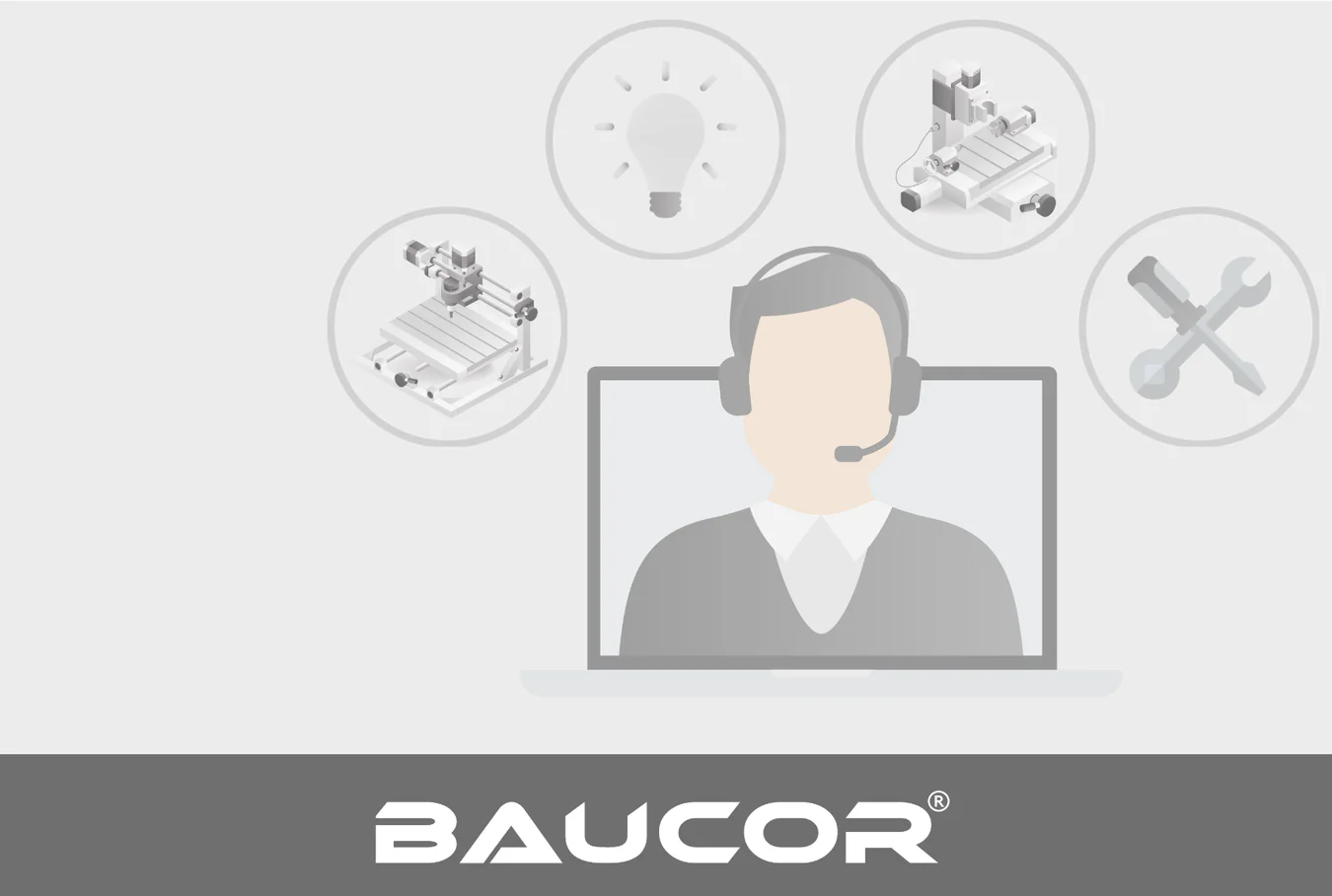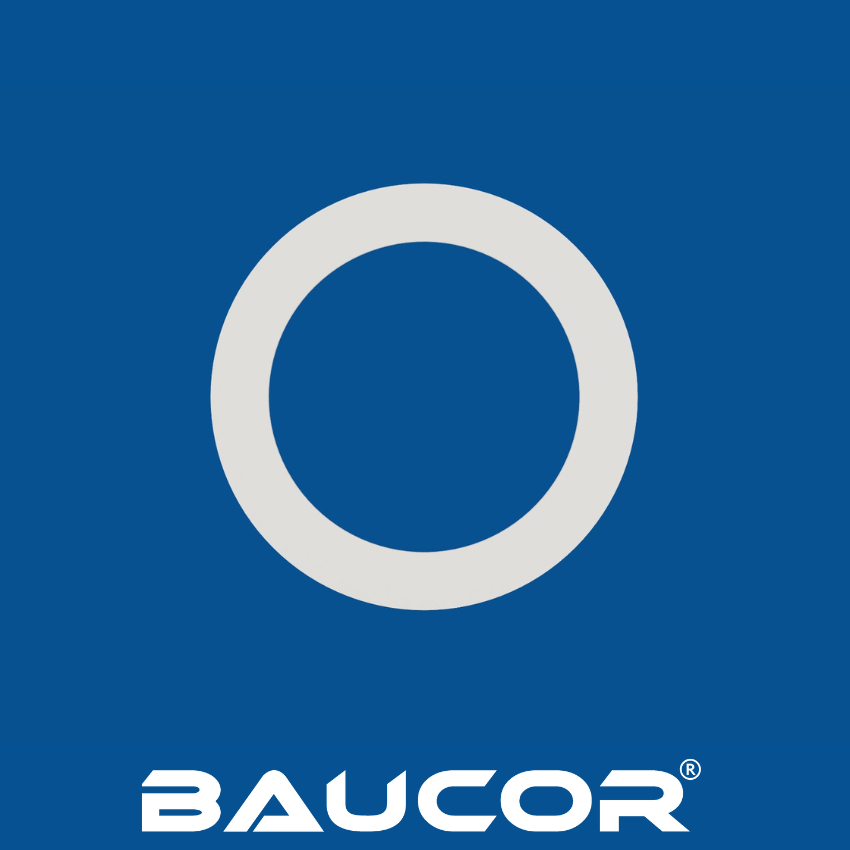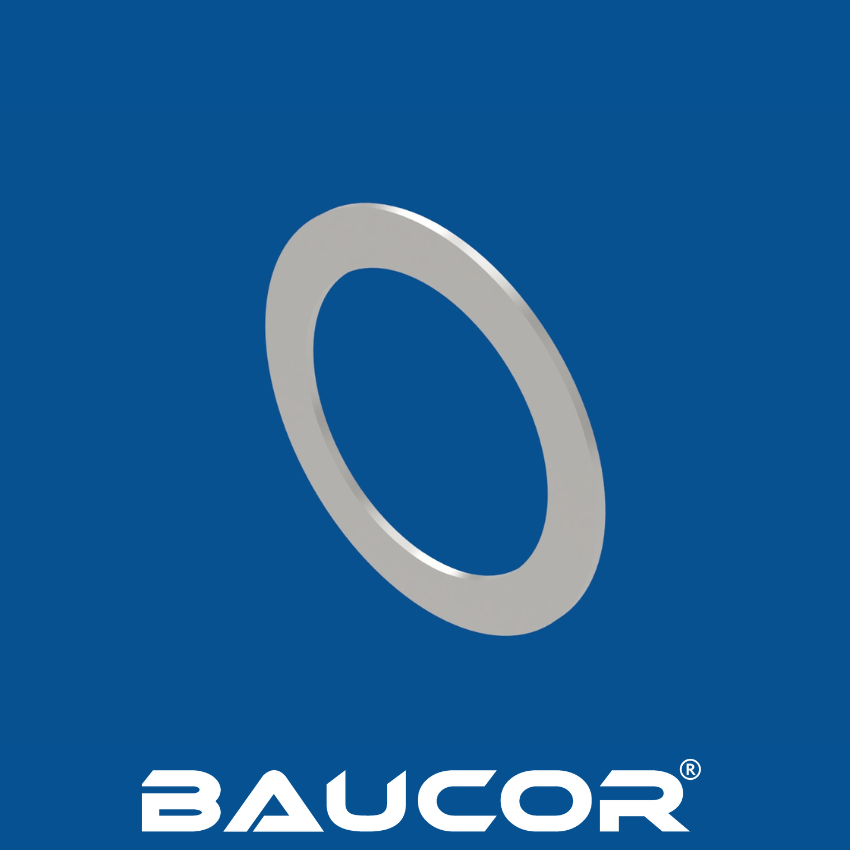
Jak produkowane są ostrza przemysłowe dla przemysłu akumulatorowego?
Co to jest ostrze przemysłowe do produkcji akumulatorów? Jak to działa?
Produkcja akumulatorów, zwłaszcza litowo-jonowych, które zasilają nasze urządzenia i pojazdy elektryczne, wymaga niezwykle precyzyjnych procesów produkcyjnych. Obejmuje to cięcie delikatnych materiałów, takich jak arkusze elektrod i folie separatorów, za pomocą specjalistycznych ostrzy. Przyjrzyjmy się temu bliżej:
Czym są ostrza przemysłowe do produkcji akumulatorów?
Są to ostrza przemysłowe zaprojektowane do cięcia:
- Arkuszy elektrod: Cienkich arkuszy pokrytych materiałami aktywnymi (takimi jak związki litowo-jonowe), które magazynują i uwalniają energię.
- Folii separujących: Mikroporowate warstwy, które zapobiegają kontaktowi między elektrodami dodatnimi i ujemnymi, zapewniając bezpieczeństwo i zapobiegając zwarciom.
- Obudowy akumulatorów: Aluminiowa lub stalowa obudowa, w której znajdują się komponenty baterii.
Jak one działają?
- Tworzywo: Często wykonane z węglik wolframu, bardzo twardy i odporny na zużycie materiał lub inne specjalistyczne stopy.
- Precyzja: Zaprojektowane ze specjalną geometrią zębów i krawędziami tnącymi czyste cięcia bez zadziorów aby uniknąć uszkodzenia wrażliwych materiałów baterii.
- Ostrość: Zachowaj wyjątkową ostrość, aby zminimalizować naprężenia i wytwarzanie ciepła podczas cięcia, które mogą mieć wpływ na wydajność akumulatora.
- Rodzaje ostrzy: W zależności od materiału i procesu cięcia stosuje się różne typy ostrzy:
- Ostrza krajarki: Do precyzyjnych, prostych cięć w arkuszach elektrod.
- Okrągłe ostrza: Służy do cięcia obudów akumulatorów lub innych okrągłych elementów.
- Specjalnie zaprojektowane ostrza: Do unikalnych projektów akumulatorów lub specjalistycznych potrzeb związanych z cięciem.
Dlaczego precyzja ma znaczenie
- Bateria Wydajność: Precyzyjne nacięcia zapewniają integralność materiału elektrody i zapobiegają uszkodzeniom, które mogłyby zmniejszyć pojemność lub żywotność baterii.
- Bezpieczeństwo: Czyste cięcia minimalizują ryzyko powstania zadziorów lub zanieczyszczeń, które mogłyby spowodować zwarcia lub inne zagrożenia bezpieczeństwa.
- Wydajność produkcji: Ostre, trwałe ostrza poprawiają wydajność produkcji i skracają przestoje.
Branże

Baucor, jako znak towarowy firmy Norck, z dumą działa na podstawie certyfikacji ISO 9001:2015 .
Kluczowe aspekty obejmują:
- Międzynarodowe standardy: Zapewnienie zgodności wszystkich procesów z globalnie uznanymi wzorcami jakości.
- Podejście skoncentrowane na kliencie: Priorytetowe traktowanie satysfakcji klienta poprzez spójną i niezawodną obsługę.
- Ciągłe doskonalenie: Kładzenie nacisku na optymalizację operacji i przepływów pracy.
- Doskonałość operacyjna: Utrzymywanie wydajności i niezawodności we wszystkich działaniach.
Ta certyfikacja odzwierciedla ciągłe zaangażowanie firmy Baucor w jakość i wydajność.
Kliknij tutaj, aby zobaczyć nasz certyfikat ISO.
UZYSKAJ OFERTĘ
Jak produkowane są ostrza przemysłowe dla przemysłu akumulatorowego?

Produkcja ostrzy akumulatorowych to złożony proces, który wymaga precyzji i wiedzy specjalistycznej. Oto zestawienie kluczowych kroków:
1. Wybór materiału:
- Węglik wolframu: Najpopularniejszy materiał ze względu na twardość, odporność na zużycie i zdolność do utrzymywania ostrej krawędzi skrawającej.
- Inne materiały: Do określonych zastosowań można zastosować stal szybkotnącą (HSS), ceramikę i diament.
- Metalurgia proszków: Ostrza z węglika wolframu są często produkowane przy użyciu metalurgii proszków, podczas której drobne proszki są zagęszczane i spiekane (podgrzewane) w celu uzyskania pożądanego kształtu.

2. Puste przygotowanie:
- Cięcie: Surowiec cięty jest na półfabrykaty, nadające początkowy kształt ostrza.
- Szlifowanie: Półfabrykaty są szlifowane w celu uzyskania podstawowego profilu i wymiarów.
3. Formacja zęba:
- Cięcie laserowe: Precyzyjne cięcie laserowe służy do tworzenia skomplikowanych profili zębów wymaganych dla różnych materiałów akumulatorów i procesów cięcia.
- Szlifowanie i kształtowanie: Dalsze szlifowanie i kształtowanie uszlachetnia zęby, zapewniając ostrość i prawidłowy kąt cięcia.
4. Obróbka cieplna:
- Hartowanie: Ostrza są podgrzewane do wysokich temperatur, a następnie szybko chłodzone, aby zwiększyć ich twardość i odporność na zużycie.
- Ruszenie: Kontrolowany proces ogrzewania zmniejsza kruchość i poprawia wytrzymałość.
5. Wykończeniowy:
- Polerowanie: Polerowanie powierzchni ostrza poprawia jego gładkość i zmniejsza tarcie podczas cięcia.
- Powłoka: Sspecjalistyczne powłoki, takie jak azotek tytanu (TiN) lub węgiel diamentopodobny (DLC), mogą dodatkowo wydłużyć żywotność ostrza, zmniejszyć tarcie i zapobiec przyleganiu materiału.
- SOstrzenie: Końcowe ostrzenie zapewnia, że ostrze jest niezwykle ostre i umożliwia precyzyjne cięcie.
6. Kontrola jakości:
- Kontrola: W całym procesie produkcyjnym przeprowadzane są rygorystyczne kontrole w celu zapewnienia dokładności wymiarowej, ostrości i ogólnej jakości.
- Testowanie: Można przeprowadzić testy cięcia w celu oceny wydajności ostrza na określonych materiałach baterii.
Zaawansowane techniki produkcyjne:
- Obróbka elektroerozyjna drutu (WEDM): Służy do tworzenia skomplikowanych kształtów i skomplikowanych szczegółów ostrza.
- Komputerowe sterowanie numeryczne (CNC) Obróbka: Zapewnia wysoką precyzję i powtarzalność w całym procesie produkcyjnym.
Produkcja ostrzy akumulatorowych wymaga specjalistycznego sprzętu, wykwalifikowanych techników i zaangażowania w jakość. Dzięki temu ostrza spełniają rygorystyczne wymagania przemysłu akumulatorowego, umożliwiając wydajne i precyzyjne cięcie delikatnych materiałów.
NIEZRÓWNANE WSPARCIE INŻYNIERYJNE




OSTRZA OKRĄGŁE, PROSTE, DZIURKOWE I NIESTANDARDOWE

Ostrza okrągłe
Małe czy duże, BAUCOR® produkuje precyzyjne ostrza tarczowe wszystkich typów i kształtów z niemal wszystkich materiałów dostępnych na rynku.

Proste ostrza
Niezależnie od tego, czy długość wynosi 5 mm czy 2500 mm, BAUCOR® dysponuje odpowiednią wydajnością i zaawansowanymi możliwościami do produkcji precyzyjnych ostrzy przemysłowych.

Ostrza do dziurkaczy
Czy wiesz, że BAUCOR® wyprodukował dziesiątki tysięcy precyzyjnych ostrzy do dziurkaczy? Uzyskaj wycenę już dziś!

Niestandardowe ostrza
Produkcja niestandardowych ostrzy przemysłowych nie jest łatwym zadaniem, z którym każdy może sobie poradzić. Dlatego BAUCOR® jest tutaj, aby pomóc!
W jakich rozmiarach Baucor produkuje ostrza przemysłowe do produkcji akumulatorów?
Jeśli chodzi o ostrza akumulatorowe, Baucor rozumie, że jeden rozmiar zdecydowanie się nada nie pasuje do wszystkich. Przy zróżnicowanej gamie typów akumulatorów i procesów produkcyjnych, rozmiar ostrza ma kluczowe znaczenie dla precyzji i wydajności.
Podejście Baucora do wymiarowania ostrzy do cięcia akumulatorów:
Baucor podchodzi kompleksowo, oferując szerokie spektrum rozmiarów i możliwości dostosowania:
Standardowe rozmiary: Baucor produkuje szeroką gamę standardowych rozmiarów ostrzy do cięcia akumulatorowego, dostosowanych do typowych potrzeb przemysłowych. Wśród nich znajdują się ostrza do cięcia arkuszy elektrod, folii separacyjnych i obudów akumulatorów o różnych wymiarach.
Niestandardowe rozwiązania: Baucor specjalizuje się w dostarczaniu specjalnie zaprojektowanych ostrzy dostosowanych do unikalnych konfiguracji akumulatorów i procesów produkcyjnych.
- Zrozumienie Twoich potrzeb: Baucor ściśle współpracuje z klientami, aby zrozumieć ich specyficzne wymagania, w tym:
Chemia baterii: Akumulatory o różnej budowie chemicznej wykorzystują różne materiały, które wymagają specjalnych konstrukcji ostrzy.
Proces cięcia: Niezależnie od tego, czy chodzi o cięcie wzdłużne, krojenie w kostkę czy cięcie konturowe, Baucor projektuje ostrza zoptymalizowane pod kątem tego zadania.
Wielkość produkcji: Trwałość i żywotność ostrzy są dostosowane do wymagań produkcyjnych.
- Inżynieria Precyzyjna: Wykorzystując zaawansowane techniki produkcyjne, takie jak obróbka CNC i WEDM, Baucor wytwarza ostrza o precyzyjnych wymiarach, geometrii zębów i profilach krawędzi.
Korzyści z elastyczności wymiarowania firmy Baucor:
- Zoptymalizowana wydajność: Ostrze o odpowiednim rozmiarze zapewnia czyste i dokładne cięcie, minimalizując uszkodzenia wrażliwych materiałów akumulatora i maksymalizując jego wydajność.
- Zwiększona wydajność: Specjalnie zaprojektowane ostrza poprawiają wydajność cięcia i skracają przestoje, co prowadzi do wyższej wydajności produkcyjnej.
- Obniżone koszty: Optymalizując wydajność i żywotność ostrzy, Baucor pomaga obniżyć ogólne koszty produkcji.
- Innowacja: Zaangażowanie firmy Baucor w personalizację wspiera rozwój nowych technologii akumulatorów i procesów produkcyjnych.
Do suma To w górę: Niezależnie od tego, czy potrzebujesz standardowego rozmiaru, czy całkowicie unikalnego ostrza, Baucor ma wszystko, czego potrzebujesz. Ich wiedza specjalistyczna w zakresie produkcji ostrzy do cięcia akumulatorowego, w połączeniu z naciskiem na dostosowywanie, gwarantuje, że otrzymasz idealne ostrze do konkretnego zastosowania.
Jakie materiały są wykorzystywane do produkcji ostrzy przemysłowych do akumulatorów?
Ostrza do cięcia akumulatorów są wykonane z różnych materiałów, każdy wybrany ze względu na swoje specyficzne właściwości i to, jak dobrze spełnia wymagania związane z cięciem delikatnych elementów akumulatora. Oto przegląd najpopularniejszych materiałów:
1. Węglik wolframu:
- Dominujący materiał: Jest to najczęściej stosowany materiał na ostrza akumulatorowe.
- Wyjątkowa twardość: węglik wolframu jest niezwykle twardy i odporny na zużycie, dzięki czemu utrzymuje ostrą krawędź skrawającą przez dłuższy czas.
- Czyste cięcia: Jego twardość umożliwia precyzyjne, czyste cięcie materiałów akumulatorowych, minimalizując zadziory i uszkodzenia.
- Idealny dla: Cięcie arkuszy elektrod, folii separacyjnych, a nawet obudów akumulatorów.
2. Stal szybkotnąca (HSS):
- Opcja opłacalna: HSS jest tańszą alternatywą dla węglika wolframu.
- Dobry do konkretnych zastosowań: Chociaż nie jest tak twardy jak węglik wolframu, HSS nadal zapewnia dobrą odporność na zużycie i ostrość, dzięki czemu nadaje się do niektórych zastosowań związanych z cięciem akumulatorowym.
- Często używane do: Cięcie bardziej miękkich elementów akumulatora lub w sytuacjach, gdy ekstremalna twardość nie jest tak krytyczna.
3. Ceramika:
- Ekstremalna twardość: Ostrza ceramiczne charakteryzują się jeszcze większą twardością niż węglik wolframu.
- Doskonała odporność na zużycie: Utrzymują ostrość przez dłuższy czas, nawet podczas cięcia materiałów ściernych.
- Stosowany w zastosowaniach specjalistycznych: Ze względu na swoją kruchość ostrza ceramiczne są zwykle używane w bardziej specjalistycznych operacjach cięcia akumulatorowego, gdzie istotna jest ich ekstremalna twardość.
4. Diament:
- Najwyższa twardość: Diament jest najtwardszym znanym materiałem, dzięki czemu idealnie nadaje się do cięcia niezwykle twardych lub ściernych elementów akumulatorów.
- Precyzyjne cięcie: Tarcze diamentowe zapewniają wyjątkową precyzję i umożliwiają tworzenie bardzo drobnych cięć.
- Ograniczone użycie: Ze względu na wysoki koszt tarcze diamentowe są zwykle zarezerwowane do specjalistycznych zastosowań w produkcji akumulatorów.
5. Inne materiały i powłoki:
- Stopy specjalistyczne:W niektórych przypadkach można zastosować specjalistyczne stopy w celu poprawy określonych właściwości, takich jak odporność na korozję lub wytrzymałość.
- Powłoki: Aby jeszcze bardziej poprawić wydajność ostrza, często stosuje się powłoki takie jak azotek tytanu (TiN) lub węgiel diamentopodobny (DLC). Powłoki te mogą zwiększać twardość, zmniejszać tarcie i zapobiegać przyklejaniu się materiału do ostrza.
Wybór odpowiedniego materiału:
Wybór najlepszego materiału na ostrze do cięcia akumulatorowego zależy od kilku czynników:
- Konkretny materiał akumulatora, który jest cięty
- Żądana prędkość skrawania i posuw
- Wymagana precyzja i tolerancja
- Ogólna opłacalność
Dokładnie rozważając te czynniki, producenci mogą wybrać optymalny materiał, aby zapewnić wydajne, precyzyjne i opłacalne cięcie akumulatorów.
Jakie powłoki poprawiają jakość ostrzy przemysłowych do produkcji akumulatorów?
Powłoki odgrywają kluczową rolę w zwiększaniu wydajności i trwałości akumulatorowych ostrzy do cięcia. Te cienkie warstwy nałożone na powierzchnię ostrza mogą znacznie poprawić jego właściwości i pomóc pokonać wyzwania związane z cięciem delikatnych materiałów akumulatorowych. Oto niektóre z najczęściej stosowanych i najskuteczniejszych powłok:
1. azotek tytanu (Cyna):
- Powłoka w kolorze złotym: Cyna jest łatwo rozpoznawalny dzięki charakterystycznemu złotemu kolorowi.
- Zwiększona twardość: Znacząco zwiększa twardość powierzchni ostrza, poprawiając odporność na zużycie i wydłużając jego żywotność.
- Zmniejszone tarcie: Cyna zmniejsza tarcie pomiędzy ostrzem a ciętym materiałem, co skutkuje gładszymi cięciami i mniejszym wytwarzaniem ciepła.
- Poprawiona wydajność: Niższe tarcie przekłada się na zmniejszenie sił skrawania, poprawę wydajności cięcia i zmniejszenie zużycia energii.
2. Węgiel podobny do diamentu (DLC):
- Wyjątkowa twardość i niskie tarcie: Powłoki DLC oferują połączenie ekstremalnej twardości i bardzo niskiego współczynnika tarcia.
- Odporność na zużycie i korozję: Zapewniają doskonałą odporność na zużycie, a także chronią ostrze przed korozją.
- Idealny do wymagających zastosowań:Powłoki DLC są często stosowane w wysokowydajnych zastosowaniach cięcia akumulatorowego, gdzie kluczowa jest ekstremalna odporność na zużycie i niskie tarcie.
3. Azotek chromu (CrN):
- Zwiększona wytrzymałość: Powłoki CrN są znane ze swojej wysokiej wytrzymałości i odporności na pękanie i odpryski.
- Dobry do materiałów ściernych: Dobrze sprawdzają się podczas cięcia ściernych materiałów akumulatorowych, które mogą szybko zużywać ostrza.
- Ochrona przed korozją: CrN zapewnia również dobrą odporność na korozję, chroniąc ostrze przed wilgocią i innymi czynnikami środowiskowymi.
4. Węgloazotek tytanu (TiCN):
- Połączenie właściwości: TiCN łączy zalety TiN i CrN, oferując równowagę twardości, wytrzymałości i odporności na zużycie.
- Wszechstronna powłoka: Jest to wszechstronna powłoka odpowiednia do szerokiego zakresu zastosowań związanych z cięciem akumulatorowym.
Korzyści z powłok:
- Wydłużona żywotność ostrza: Powłoki znacznie zwiększają żywotność ostrza, zmniejszając jego zużycie.
- Poprawiona wydajność cięcia: Zmniejszone tarcie i zwiększona twardość prowadzą do bardziej wydajnego cięcia, wymagającego mniejszej siły i energii.
- Zwiększona precyzja: Powłoki mogą pomóc w utrzymaniu ostrości i dokładności krawędzi tnącej, co skutkuje bardziej precyzyjnymi cięciami.
- Zmniejszone wytwarzanie ciepła: Niższe tarcie minimalizuje gromadzenie się ciepła podczas cięcia, które może uszkodzić wrażliwe materiały akumulatora.
- Ochrona przed korozją: Wiele powłok zapewnia barierę przed korozją, chroniąc ostrze przed wilgocią i innymi czynnikami środowiskowymi.
Wybierając odpowiednią powłokę, producenci mogą zoptymalizować ostrza akumulatorowe do konkretnych zastosowań, poprawiając ich wydajność, trwałość i ogólną opłacalność.
UZYSKAJ OFERTĘ
Gdzie znajdują się ostrza przemysłowe do produkcji akumulatorów?
Ostrza do cięcia akumulatorów to niezbędne narzędzia w różnych gałęziach przemysłu i zastosowaniach, w których krytyczne znaczenie ma precyzyjne i wydajne cięcie materiałów akumulatorowych. Oto niektóre z kluczowych obszarów, w których wykorzystywane są te specjalistyczne ostrza:
1. Produkcja baterii:
- Cięcie arkuszy elektrod: Ostrza do cięcia akumulatorów są szeroko stosowane do cięcia arkuszy elektrod (anod i katod) w precyzyjne kształty i rozmiary. Arkusze te są pokryte aktywnymi materiałami, które magazynują i uwalniają energię.
- Cięcie folii separacyjnej: Cienkie folie separacyjne, które zapobiegają kontaktowi anody z katodą, są również cięte za pomocą specjalistycznych ostrzy, aby zapewnić dokładne wymiary i zapobiec defektom.
- Zespół ogniw akumulatora: Ostrza mogą być używane na różnych etapach montażu ogniw akumulatorowych, takich jak wypustki lub inne elementy.
2. Produkcja elektroniki:
- Elektronika użytkowa: Ostrza do cięcia akumulatorów wykorzystywane są przy produkcji akumulatorów do smartfonów, laptopów, tabletów i innych urządzeń elektroniki użytkowej.
- Urządzenia do noszenia: Mniejsze ostrza są niezbędne do cięcia materiałów z akumulatorów do urządzeń przenośnych, takich jak smartwatche i monitory fitness.
3. Przemysł motoryzacyjny:
- Pojazdy elektryczne (EV): Rosnący rynek pojazdów elektrycznych w dużej mierze opiera się na ostrzach do cięcia akumulatorów do produkcji wielkoformatowych akumulatorów litowo-jonowych, które zasilają elektryczne samochody i ciężarówki.
- Pojazdy hybrydowe: Ostrza do cięcia akumulatorów wykorzystywane są także przy produkcji akumulatorów do pojazdów hybrydowych.
4. Magazynowanie energii:
- Energia odnawialna: Ostrza do cięcia akumulatorów odgrywają rolę w produkcji akumulatorów do magazynowania energii wytwarzanej ze źródeł odnawialnych, takich jak energia słoneczna i wiatrowa.
- Magazynowanie energii w skali sieciowej: Wielkoskalowe systemy magazynowania energii również wykorzystują akumulatory, a ostrza te są niezbędne do produkcji elementów akumulatorów.
5. Badania i rozwój:
- Badania baterii: Naukowcy i inżynierowie wykorzystują ostrza do cięcia akumulatorów w badaniach i rozwoju, aby tworzyć prototypowe akumulatory oraz testować nowe materiały i projekty.
6. Inne zastosowania:
- Elektronarzędzia: Narzędzia tnące zasilane akumulatorowo, takie jak piły tarczowe i piły szablaste, wykorzystują specjalistyczne ostrza przeznaczone do zastosowań bezprzewodowych. Ostrza te są zoptymalizowane pod kątem wydajności i maksymalizowania żywotności baterii.
- Urządzenia medyczne: Niektóre urządzenia medyczne zasilane bateriami mogą wymagać specjalistycznych ostrzy do cięcia elementów baterii podczas produkcji.
Stosowanie ostrzy do cięcia akumulatorów jest niezbędne dla zapewnienia jakości, wydajności i bezpieczeństwa akumulatorów w wielu gałęziach przemysłu. W miarę ciągłego rozwoju technologii akumulatorów i pojawiania się nowych zastosowań, oczekuje się, że zapotrzebowanie na te specjalistyczne ostrza będzie rosło.
Które branże wykorzystują ostrza przemysłowe do produkcji akumulatorów?
Ostrza do cięcia akumulatorów są niezbędnymi narzędziami w wielu gałęziach przemysłu, które polegają na precyzyjnym i wydajnym cięciu materiałów akumulatorowych. Oto niektóre z kluczowych sektorów, w których te specjalistyczne ostrza odgrywają istotną rolę:
1. Produkcja baterii: To jest najbardziej oczywiste! Producenci akumulatorów powszechnie używają tych ostrzy do cięcia arkuszy elektrod, folii oddzielających i innych elementów stosowanych w produkcji ogniw akumulatorowych. Branża ta obejmuje szeroką gamę typów akumulatorów, w tym akumulatory litowo-jonowe, kwasowo-ołowiowe, niklowo-wodorkowe i inne.
2. Elektronika użytkowa: Produkcja smartfonów, laptopów, tabletów i innych przenośnych urządzeń elektronicznych opiera się w dużej mierze na ostrzach do cięcia akumulatorów. Urządzenia te wymagają kompaktowych i precyzyjnie wyciętych elementów akumulatorów, co sprawia, że specjalistyczne ostrza są niezbędne w tej branży.
3. Przemysł motoryzacyjny: Wraz ze wzrostem liczby pojazdów elektrycznych (EV) i pojazdów hybrydowych, przemysł motoryzacyjny stał się głównym konsumentem ostrzy do cięcia akumulatorów. Łopatki te mają kluczowe znaczenie przy produkcji wielkoformatowych akumulatorów litowo-jonowych, które zasilają te pojazdy.
4. Magazynowanie energii: Rosnące zapotrzebowanie na odnawialne źródła energii i magazynowanie energii na skalę sieciową zwiększyło zapotrzebowanie na akumulatorowe ostrza do cięcia. Łopatki te wykorzystywane są do produkcji akumulatorów służących do magazynowania energii wytwarzanej ze słońca, wiatru i innych źródeł odnawialnych.
5. Produkcja elektronarzędzi: Producenci elektronarzędzi akumulatorowych, takich jak piły tarczowe, piły szablaste i szlifierki kątowe, wykorzystują w swoich procesach produkcyjnych ostrza akumulatorowe. Ostrza te zaprojektowano z myślą o wydajności i wydajności narzędzi zasilanych akumulatorowo.
6. Produkcja wyrobów medycznych: Działanie niektórych wyrobów medycznych opiera się na bateriach, a do produkcji tych urządzeń wykorzystywane są ostrza do cięcia akumulatorów, aby zapewnić precyzyjne i bezpieczne elementy akumulatorów.
7. Przemysł lotniczy: Przemysł lotniczy wykorzystuje ostrza do cięcia akumulatorów przy produkcji akumulatorów do samolotów, satelitów i innych zastosowań lotniczych.
8. Badania i rozwój: Naukowcy i inżynierowie zaangażowani w badania i rozwój akumulatorów wykorzystują te ostrza do tworzenia prototypowych akumulatorów, testowania nowych materiałów i udoskonalania technologii akumulatorów.
To tylko kilka przykładów z wielu branż, które opierają się na ostrzach akumulatorowych. W miarę ciągłego rozwoju technologii akumulatorów i pojawiania się nowych zastosowań zapotrzebowanie na te specjalistyczne ostrza prawdopodobnie rozszerzy się na jeszcze więcej sektorów.
USŁUGI INŻYNIERYJNE I PROTOTYPOWE


Jakie maszyny wykorzystują ostrza przemysłowe do produkcji akumulatorów?
Akumulatorowe ostrza tnące są stosowane w szerokiej gamie maszyn, zarówno w zastosowaniach przemysłowych, jak i do zastosowań codziennych. Oto niektóre z najpopularniejszych maszyn wykorzystujących te specjalistyczne ostrza:
Maszyny przemysłowe:
- Maszyny do cięcia wzdłużnego: Maszyny te wykorzystują cienkie, okrągłe ostrza do cięcia arkuszy elektrod i folii separacyjnych na precyzyjne paski. Są niezbędne w produkcji akumulatorów w przypadku produkcji na dużą skalę.
- Maszyny do cięcia laserowego: Wysoce precyzyjne wycinarki laserowe wyposażone w specjalistyczne ostrza mogą wycinać skomplikowane kształty i wzory w materiałach akumulatorowych. Często wykorzystuje się je do tworzenia niestandardowych projektów akumulatorów lub do celów badawczo-rozwojowych.
- Maszyny do sztancowania: Maszyny te wykorzystują ukształtowane ostrze (lub matrycę) do wycinania określonych kształtów z materiałów akumulatorowych. Często wykorzystuje się je do wycinania elektrod lub innych elementów o złożonej geometrii.
- Maszyny do cięcia strumieniem wody: Przecinarki strumieniem wody wykorzystują strumień wody pod wysokim ciśnieniem, czasami zmieszany z materiałem ściernym, do cięcia materiałów akumulatorowych. Są szczególnie przydatne do cięcia delikatnych materiałów, które mogą zostać uszkodzone przez ciepło powstające przy innych metodach cięcia.
Ręczne elektronarzędzia:
- Piły tarczowe: Akumulatorowe piły tarczowe ze specjalistycznymi ostrzami służą do cięcia różnych materiałów, m.in. drewna, metalu i tworzyw sztucznych. Ostrza te zaprojektowano z myślą o wydajności i maksymalizacji żywotności baterii.
- Piły szablaste: Akumulatorowe piły szablaste ze specjalistycznymi ostrzami służą do prac rozbiórkowych, przycinania i cięcia różnych materiałów w budownictwie i projektach DIY.
- Układanki: Wyrzynarki akumulatorowe ze specjalistycznymi ostrzami umożliwiają wykonywanie zakrzywionych i skomplikowanych cięć w różnych materiałach.
- Szlifierki kątowe: Akumulatorowe szlifierki kątowe z tarczami tnącymi można stosować do cięcia metalu, płytek i innych materiałów.
Inne maszyny:
- Centra obróbcze CNC: Maszyny sterowane numerycznie (CNC) mogą być wyposażone w ostrza do cięcia akumulatorowego w celu precyzyjnego i zautomatyzowanego cięcia elementów akumulatorów.
- Ramiona robotyczne: W zautomatyzowanych procesach produkcji akumulatorów ramiona robotyczne wyposażone w ostrza do cięcia akumulatorów mogą wykonywać precyzyjne zadania cięcia.
Konkretny typ używanej maszyny będzie zależał od zastosowania, ciętych materiałów, pożądanej precyzji i wielkości produkcji. Postęp w technologii akumulatorów i procesach produkcyjnych w dalszym ciągu napędza rozwój nowych i innowacyjnych maszyn wykorzystujących akumulatorowe ostrza tnące.
Jakie wsparcie projektowe i inżynieryjne zapewnia Baucor w zakresie ostrzy przemysłowych do produkcji akumulatorów?
Jako wiodący dostawca ostrzy akumulatorowych, Baucor wykracza poza zwykłą produkcję ostrzy. Oferują kompleksowe wsparcie projektowe i inżynieryjne, aby zapewnić swoim klientom optymalne rozwiązania odpowiadające ich konkretnym potrzebom. Oto najważniejsze aspekty ich wsparcia:
1. Proces wspólnego projektowania:
- Zrozumienie Twoich potrzeb: Baucor zaczyna od ścisłej współpracy z Tobą, aby zrozumieć Twoje unikalne wymagania. Obejmuje to takie czynniki jak:
- Chemia i materiały akumulatorów: Różne składy chemiczne akumulatorów wymagają różnych konstrukcji ostrzy i materiałów.
- Proces cięcia: Niezależnie od tego, czy jest to cięcie wzdłużne, krojenie w kostkę czy cięcie konturowe, Baucor uwzględnia Twój specyficzny proces.
- Wielkość i prędkość produkcji: Trwałość i żywotność ostrza są dostosowane do wymagań produkcyjnych.
- Pożądane tolerancje i precyzja: Baucor gwarantuje, że ostrza będą dokładnie odpowiadać Twoim specyfikacjom.
- Konsultacje ekspertów: Doświadczeni inżynierowie firmy Baucor służą fachowym doradztwem w zakresie konstrukcji ostrza, doboru materiału i parametrów cięcia.
2. Zaawansowane możliwości inżynieryjne:
- Projektowanie i modelowanie CAD: Baucor wykorzystuje najnowocześniejsze oprogramowanie do projektowania wspomaganego komputerowo (CAD) do tworzenia precyzyjnych modeli 3D ostrzy, co pozwala na szczegółową analizę i optymalizację przed produkcją.
- Analiza elementów skończonych (FEA): Symulacje FEA służą do oceny wydajności ostrza w różnych warunkach skrawania, zapewniając jego integralność strukturalną i optymalizując konstrukcję pod kątem maksymalnej wydajności i trwałości.
- Umiejętność doboru materiałów: Baucor posiada dogłębną wiedzę na temat różnych materiałów i powłok ostrzy, zapewniając optymalny dobór do konkretnego zastosowania.
3. Prototypowanie i testowanie:
- Szybkie prototypowanie: Baucor może szybko wyprodukować prototypy zaprojektowanych ostrzy, co pozwala na przetestowanie ich w rzeczywistym środowisku produkcyjnym i przekazanie informacji zwrotnej.
- Testowanie wydajności: Baucor przeprowadza rygorystyczne testy ostrzy, aby upewnić się, że spełniają one wymagania dotyczące wydajności w zakresie dokładności cięcia, szybkości i żywotności.
4. Ciągłe doskonalenie:
- Monitorowanie wydajności: Baucor może pomóc Ci monitorować wydajność ostrzy na Twojej linii produkcyjnej, identyfikując obszary wymagające ulepszeń i optymalizacji.
- Bieżące wsparcie: Baucor zapewnia ciągłe wsparcie techniczne i konsultacje, aby sprostać wszelkim wyzwaniom i pytaniom, jakie możesz mieć przez cały cykl życia ostrza.
Korzyści ze wsparcia projektowego i inżynieryjnego firmy Baucor:
- Zoptymalizowana wydajność ostrza: Zapewnia idealne dopasowanie ostrzy do konkretnych potrzeb, maksymalizując wydajność cięcia i minimalizując uszkodzenia materiałów akumulatora.
- Skrócony czas programowania: Wiedza fachowa firmy Baucor i zaawansowane narzędzia inżynieryjne pomagają przyspieszyć proces projektowania i prototypowania, dzięki czemu produkcja może szybciej rozpocząć się.
- Poprawiona wydajność produkcji: Zoptymalizowane ostrza prowadzą do zwiększenia wydajności produkcji i skrócenia przestojów.
- Niższe koszty całkowite: Maksymalizując wydajność i żywotność ostrzy, Baucor pomaga obniżyć całkowite koszty produkcji.
- Innowacja i współpraca: Podejście oparte na współpracy firmy Baucor sprzyja innowacjom, umożliwiając odkrywanie nowych możliwości w technologii cięcia akumulatorów.
Krótko mówiąc, Baucor działa jak prawdziwy partner, zapewniający kompleksowe wsparcie projektowe i inżynieryjne w całym procesie, od wstępnej koncepcji po ciągłą optymalizację, zapewniając najlepsze możliwe rozwiązania w zakresie cięcia akumulatorów.
NIEZRÓWNANE WSPARCIE INŻYNIERYJNE

Ekspertyza inżynierska na każdym kroku
BAUCOR oferuje niestandardowe rozwiązania produkcyjne i inżynieryjne dostosowane do Twoich konkretnych potrzeb w różnych branżach.

Zoptymalizuj swój projekt pod kątem produkcji
Inżynierowie BAUCOR mogą przejrzeć Twój projekt i udzielić Ci wskazówek, które pomogą Ci udoskonalić możliwości produkcyjne, opłacalność i wydajność.


Jakie są wytyczne projektowe dla ostrzy przemysłowych do produkcji akumulatorów?
Projektowanie ostrzy akumulatorowych wymaga dokładnego rozważenia różnych czynników, aby zapewnić optymalną wydajność, precyzję i trwałość. Oto zestawienie kluczowych przewodników projektowych:
1. Wybór materiału:
- Twardość: Materiał ostrza musi być twardszy niż cięty materiał. Węglik wolframu jest popularnym wyborem ze względu na wyjątkową twardość i odporność na zużycie.
- Wytrzymałość: Ostrze musi być wystarczająco mocne, aby wytrzymać siły tnące bez pękania i odpryskiwania.
- Kompatybilność chemiczna: Materiał ostrza nie powinien reagować z materiałami akumulatora ani żadnymi substancjami chemicznymi używanymi w procesie produkcyjnym.
2. Geometria ostrza:
- Profil zęba:Kształt i wielkość zębów decydują o wydajności i jakości cięcia. Różne profile zębów są zoptymalizowane dla różnych materiałów i procesów cięcia (np. cięcia wzdłużnego, krojenia w kostkę lub cięcia konturowego).
- Kąt natarcia: Kąt czoła zęba w stosunku do kierunku skrawania wpływa na usuwanie wiórów i siły skrawania.
- Kąt luzu: Kąt między grzbietem zęba a obrabianym przedmiotem zapobiega tarciu i gromadzeniu się ciepła.
- Grubość ostrza: Grubość ostrza wpływa na jego sztywność i stabilność podczas cięcia. Grubsze ostrza są na ogół trwalsze, ale wymagają większej siły cięcia.
3. Najnowocześniejsza technologia:
- Ostrość: Ostra krawędź tnąca ma kluczowe znaczenie dla czystych, precyzyjnych cięć i minimalizacji uszkodzeń materiałów akumulatora.
- Przygotowanie krawędzi: Honowanie i polerowanie krawędzi tnącej może jeszcze bardziej poprawić jej ostrość i zmniejszyć tarcie.
4. Powłoki:
- Odporność na zużycie: Powłoki takie jak azotek tytanu (TiN) lub węgiel diamentopodobny (DLC) mogą znacznie zwiększyć odporność ostrza na zużycie i wydłużyć jego żywotność.
- Redukcja tarcia: Powłoki mogą również zmniejszać tarcie pomiędzy ostrzem a materiałem, co prowadzi do gładszych cięć i mniejszego wytwarzania ciepła.
5. Rozważania specyficzne dla aplikacji:
- Chemia baterii: Akumulatory o różnej budowie chemicznej wykorzystują różne materiały, które mogą wymagać specjalnych konstrukcji ostrzy.
- Proces cięcia: Specyficzny proces cięcia (np. cięcie ciągłe lub przerywane) wpływa na konstrukcję ostrza.
- Wielkość produkcji: Ostrza do produkcji na dużą skalę muszą być zaprojektowane pod kątem trwałości i długiej żywotności.
- Wymagania dotyczące precyzji: Wymagane tolerancje i precyzja cięcia będą miały wpływ na konstrukcję ostrza i proces produkcji.
6. Proces produkcyjny:
- Produkcja precyzyjna: Proces produkcyjny musi zapewniać dokładność wymiarową ostrza i jakość krawędzi tnącej.
- Kontrola jakości: Rygorystyczne środki kontroli jakości są niezbędne, aby mieć pewność, że ostrze spełnia wymagane specyfikacje.
Postępując zgodnie z tymi wskazówkami projektowymi i współpracując z doświadczonymi producentami ostrzy, możesz mieć pewność, że Twoje ostrza do cięcia akumulatorowego będą zoptymalizowane pod kątem konkretnego zastosowania, zapewniając wydajne, precyzyjne i ekonomiczne cięcie delikatnych materiałów akumulatorowych.


 English
English